2022年ACCA考試BT知識(shí)點(diǎn)匯總!
| BT | MA | FA | LW | PM | TX |
| FR | AA | FM | SBL | SBR | AFM | APM |
假裝努力欺騙到的只有自己。永遠(yuǎn)不要用戰(zhàn)術(shù)上的勤奮,,來掩飾戰(zhàn)略上的懶惰。如果選擇了備考ACCA,,便請(qǐng)全力以赴,盡量戰(zhàn)勝所有困難拿下它,,這樣才不負(fù)當(dāng)初的選擇,。今天為大家總結(jié)了2022年ACCA考試BT科目知識(shí)點(diǎn),,正在備考的考生們一起來看看吧。
■23新考季全面開班,,全科套餐立省¥3000
■推薦閱讀:ACCA考試介紹丨考綱一覽丨科目特點(diǎn)
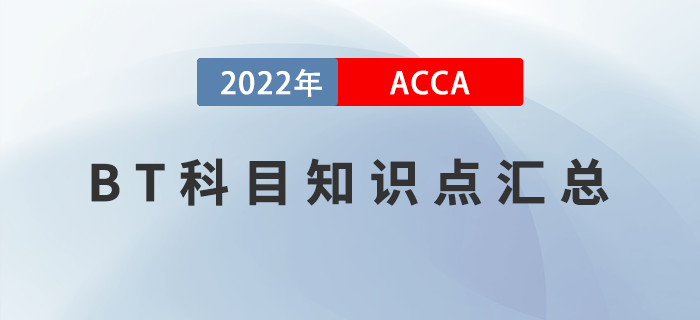
| 課程名稱(英) | 課程名稱(中) | 詳情 |
Definition of business organizations | 商業(yè)組織的定義 | 知識(shí)點(diǎn)詳解>>> |
Why do organizations exist | 企業(yè)組織優(yōu)點(diǎn) | 知識(shí)點(diǎn)詳解>>> |
Types of business organization | 企業(yè)組織類型 | 知識(shí)點(diǎn)詳解>>> |
Non-governmental organizations (NGO) | 非政府組織 | 知識(shí)點(diǎn)詳解>>> |
Co-operative societies | 合作社 | 知識(shí)點(diǎn)詳解>>> |
| Mutual associations | 互助會(huì) | 知識(shí)點(diǎn)詳解>>> |
Stakeholder conflict | 利益沖突 | 知識(shí)點(diǎn)詳解>>> |
| Family life cycle | 家庭生命周期 | 知識(shí)點(diǎn)詳解>>> |
Social structures and class | 社會(huì)結(jié)構(gòu)和階級(jí) | 知識(shí)點(diǎn)詳解>>> |
Buying patterns | 購買模式 | 知識(shí)點(diǎn)詳解>>> |
Cultural trends | 文化趨勢(shì) | 知識(shí)點(diǎn)詳解>>> |
| Organization structure | 組織結(jié)構(gòu) | 知識(shí)點(diǎn)詳解>>> |
Organization structure Effects on the role of the accountant and organizations | 組織結(jié)構(gòu)對(duì)會(huì)計(jì)和組織角色的影響 | 知識(shí)點(diǎn)詳解>>> |
| Advantages of outsourcing | 外包優(yōu)勢(shì) | 知識(shí)點(diǎn)詳解>>> |
Disadvantages of outsourcing | 外包劣勢(shì) | 知識(shí)點(diǎn)詳解>>> |
Environment footprint | 環(huán)境足跡 | 知識(shí)點(diǎn)詳解>>> |
Impact on organization of environmental costs | 企業(yè)組織的環(huán)節(jié)支出成本 | 知識(shí)點(diǎn)詳解>>> |
Social impacts of activities | 企業(yè)活動(dòng)的社會(huì)影響 | 知識(shí)點(diǎn)詳解>>> |
Corporate social responsibility(CSR) | 企業(yè)社會(huì)責(zé)任 | 知識(shí)點(diǎn)詳解>>> |
Resignation | 辭職 | 知識(shí)點(diǎn)詳解>>> |
Dismissal | 解雇 | 知識(shí)點(diǎn)詳解>>> |
Redundancy | 裁員,集中辭退員工 | 知識(shí)點(diǎn)詳解>>> |
Health and safety | 健康安全法 | 知識(shí)點(diǎn)詳解>>> |
| Five forces | 波特五力模型 | 知識(shí)點(diǎn)詳解>>> |
The threat of new entrants to the industry | 潛在進(jìn)入者的進(jìn)入威脅 | 知識(shí)點(diǎn)詳解>>> |
| The threat of substitute products or services | 替代品的替代威脅 | 知識(shí)點(diǎn)詳解>>> |
| The bargaining power of customers | 購買者討價(jià)還價(jià)的能力 | 知識(shí)點(diǎn)詳解>>> |
| The bargaining power of suppliers | 供應(yīng)者討價(jià)還價(jià)的能力 | 知識(shí)點(diǎn)詳解>>> |
| The rivalry amongst current competitors in the industry | 產(chǎn)業(yè)內(nèi)現(xiàn)有企業(yè)的競(jìng)爭(zhēng) | 知識(shí)點(diǎn)詳解>>> |
| Primary activities | 基本活動(dòng) | 知識(shí)點(diǎn)詳解>>> |
| SWOT | 態(tài)勢(shì)分析 | 知識(shí)點(diǎn)詳解>>> |
| Macroeconomics | 宏觀經(jīng)濟(jì) | 知識(shí)點(diǎn)詳解>>> |
| Aggregate supply | 總供給 | 知識(shí)點(diǎn)詳解>>> |
| Equilibrium national income | 均衡國民收入 | 知識(shí)點(diǎn)詳解>>> |
| Advantages of economic growth | 經(jīng)濟(jì)增長(zhǎng)劣勢(shì) | 知識(shí)點(diǎn)詳解>>> |
| Cyclical | 周期性失業(yè) | 知識(shí)點(diǎn)詳解>>> |
| The multiplier in the national economy | 乘數(shù)效應(yīng) | 知識(shí)點(diǎn)詳解>>> |
| Money supply | 貨幣供應(yīng) | 知識(shí)點(diǎn)詳解>>> |
| Substitutes and complements | 替代品和互補(bǔ)品 | 知識(shí)點(diǎn)詳解>>> |
| Price elasticity of demand (PED) | 需求的價(jià)格彈性 | 知識(shí)點(diǎn)詳解>>> |
| Income elasticity of demand (IED) | 需求的收入彈性 | 知識(shí)點(diǎn)詳解>>> |
| Cross elasticity of demand (CED) | 需求的交叉彈性 | 知識(shí)點(diǎn)詳解>>> |
| Informal organization | 非正式組織 | 知識(shí)點(diǎn)詳解>>> |
| Benefits of the informal organization | 非正式組織優(yōu)點(diǎn) | 知識(shí)點(diǎn)詳解>>> |
| Problems of the informal organization | 非正式組織問題 | 知識(shí)點(diǎn)詳解>>> |
| Strategic apex | 戰(zhàn)略頂點(diǎn) | 知識(shí)點(diǎn)詳解>>> |
| Technostructure | 技術(shù)結(jié)構(gòu) | 知識(shí)點(diǎn)詳解>>> |
| Advantages of Functional organization | 職能制組織結(jié)構(gòu)優(yōu)勢(shì) | 知識(shí)點(diǎn)詳解>>> |
| Disadvantages of Functional organization | 職能制組織結(jié)構(gòu)劣勢(shì) | 知識(shí)點(diǎn)詳解>>> |
Advantages of Matrix and project organization | 矩陣制優(yōu)勢(shì) | 知識(shí)點(diǎn)詳解>>> |
| Disadvantages of Matrix and project organization | 矩陣制劣勢(shì) | 知識(shí)點(diǎn)詳解>>> |
| Divisionalisation | 事業(yè)部制 | 知識(shí)點(diǎn)詳解>>> |
| Hybrid structures | 混合結(jié)構(gòu) | 知識(shí)點(diǎn)詳解>>> |
| 持續(xù)更新中…… | ||
ACCA BT(商業(yè)與技術(shù))考試大綱下載(2022.09-2023.08) 點(diǎn)擊下載
點(diǎn)擊下載
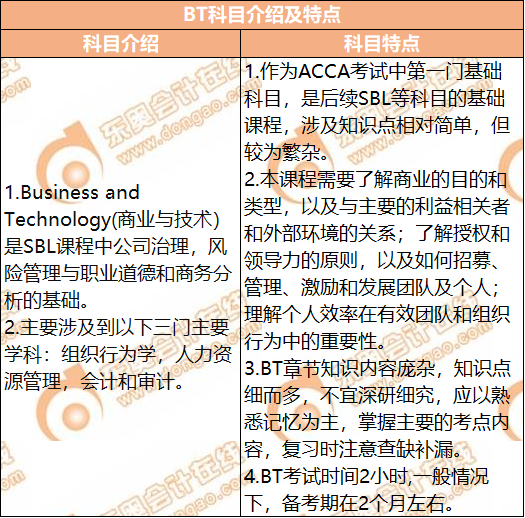
(注:以上內(nèi)容源自東奧教研團(tuán)隊(duì),,僅供參考)
學(xué)習(xí)計(jì)劃需要根據(jù)自己的實(shí)際情況來制定,,需要在明確自己優(yōu)勢(shì)與劣勢(shì)的前提下制定。比如說有些同學(xué)理解能力較強(qiáng),,學(xué)習(xí)進(jìn)度較快,但知識(shí)點(diǎn)容易遺忘,便應(yīng)該增加做題時(shí)間與知識(shí)點(diǎn)復(fù)習(xí)時(shí)間,。比如說有些同學(xué)看書較慢,,但理解記憶能力較強(qiáng),,此時(shí)便可增加學(xué)習(xí)時(shí)間。同時(shí)考生需要認(rèn)清自己的學(xué)習(xí)目標(biāo),,明白自己到底是為了什么而考試,是為了低分通過,,還是理解記憶知識(shí)點(diǎn),做到學(xué)有所成,。ACCA考試是有技巧可言的,,如果說只是為了通過acca考試,那么重點(diǎn)做題,,了解出題者意圖即可。如果是為了考取高分,,那還是要精力放在書本中,,并提升自己的實(shí)踐能力,。
acca課程間存在著一定的聯(lián)系。只是隨著考生通過科目的增加,,課程難度會(huì)上升,。因此建議在前期學(xué)習(xí)過程中,,考生做好思維導(dǎo)圖,后期復(fù)習(xí)時(shí)用思維導(dǎo)圖將知識(shí)點(diǎn)串聯(lián)起來,,真正做到融會(huì)貫通,,構(gòu)建起更為系統(tǒng)化的知識(shí)框架,讓自己的理解更為全面,。
再長(zhǎng)的路,一步步也能走完,。再短的路,,不邁開雙腳也無法完成。2022年ACCA考試時(shí)間已經(jīng)公布,,同學(xué)們要調(diào)整學(xué)習(xí)狀態(tài),爭(zhēng)取一次通過acca考試,。
(本文是東奧會(huì)計(jì)在線原創(chuàng)文章,,轉(zhuǎn)載請(qǐng)注明來自東奧會(huì)計(jì)在線)




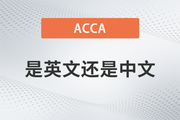
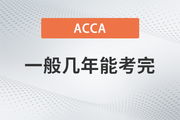
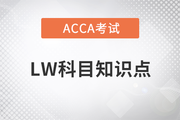
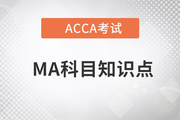
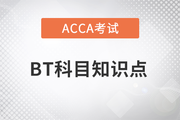





















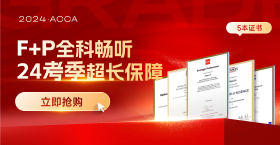

 津公網(wǎng)安備12010202000755號(hào)
津公網(wǎng)安備12010202000755號(hào)